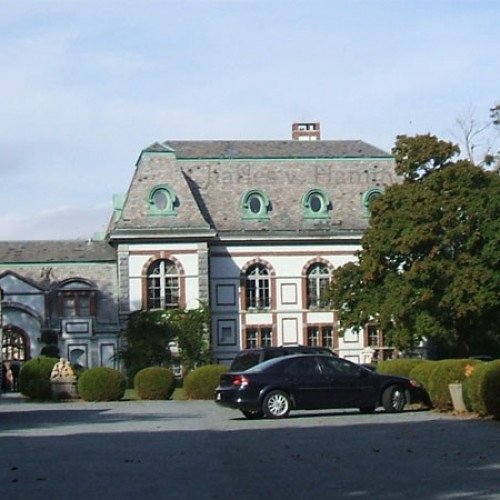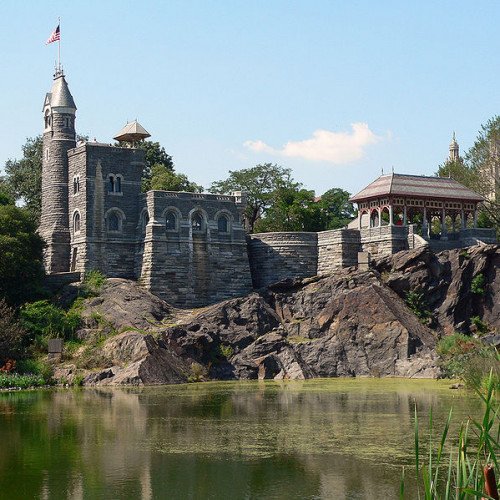Castles of "United States" BELCOURT OF NEWPORT vs BELVEDERE CASTLE

BELCOURT OF NEWPORT
Belcourt is a former summer cottage designed by architect Richard Morris Hunt for Oliver Hazard Perry Belmont and located on Bellevue Avenue in Newport, Rhode Island. Construction was begun in 1891 and completed in 1894, and it was intended to be used for only six to eight weeks of the year. Belcourt was designed in a multitude of European styles and periods; it features a heavy emphasis on French Renaissance and Gothic decor, with further borrowings from German, English, and Italian design. In the Gilded Age, the castle was noted for its extensive stables and carriage areas, which were incorporated into the main structure. Located on Bellevue Avenue at Lakeview Avenue, Belcourt was designed by Richard Morris Hunt for 33-year-old Oliver Belmont, who was divorced from Sara Swan Whiting and the father of a daughter, Natica, whom he denied paternity to, during the construction of his 50,000-square-foot (4,600 m²), 60-room summer villa. Based on the Louis XIII hunting lodge at Versailles, Belcourt incorporated Oliver's love of pageantry, history and horses in its magnificent interior halls, salons and ballrooms. The Belmont Stakes was named for his father, August Belmont Sr., and he was known for his skill as a four-in-hand carriage driver. Belmont wanted Belcourt designed precisely to his specifications. Hunt was hesitant, but he concentrated on his guiding principle that it was his client's money he was spending. Construction cost $3.2 million in 1894, a figure of approximately $80 million in 2011 dollars. Belmont employed some thirty servants at Belcourt, with aggregate wages of approximately $100 per week.
Statistics for this Xoptio

BELVEDERE CASTLE
Belvedere Castle is a folly in Central Park in Manhattan, New York City. It contains exhibit rooms and an observation deck, and since 1919, has also housed the official Central Park weather station. Belvedere Castle was designed by Frederick Law Olmsted and Calvert Vaux in 1867–1869. An architectural hybrid of Gothic and Romanesque styles, Vaux's design called for a Manhattan schist and granite structure with a corner tower with conical cap, with the existing lookout over parapet walls between them. Its name comes from belvedere, which means "beautiful view" in Italian.:162 The castle was designed by the architects Calvert Vaux and Jacob Wrey Mould as an additional feature of the Greensward Plan, created by Vaux and Frederick Law Olmsted. Olmsted and Vaux were re-hired to their positions in mid-1865 after quitting abruptly several years before.:58–59 In 1867, Vaux decided to develop this area by building Belvedere Castle on the top of the rock, overlooking the Croton Reservoir. The site already held a fire tower under the control of the Croton Aqueduct board, and so the fire tower was demolished. The original plans for Belvedere Castle called for two turreted stone towers: a larger structure on the eastern elevation and a smaller structure on the west side.:60 Under Tammany Hall's leadership, it was revised in November 1870 to reduce costs and was completed as an open painted-wood pavilion. The eastern structure was completed by 1871, while the western structure was never built.:60 As the plantings matured, the castle has been obscured from its original intended viewpoint. Its turret is the highest point in the park.